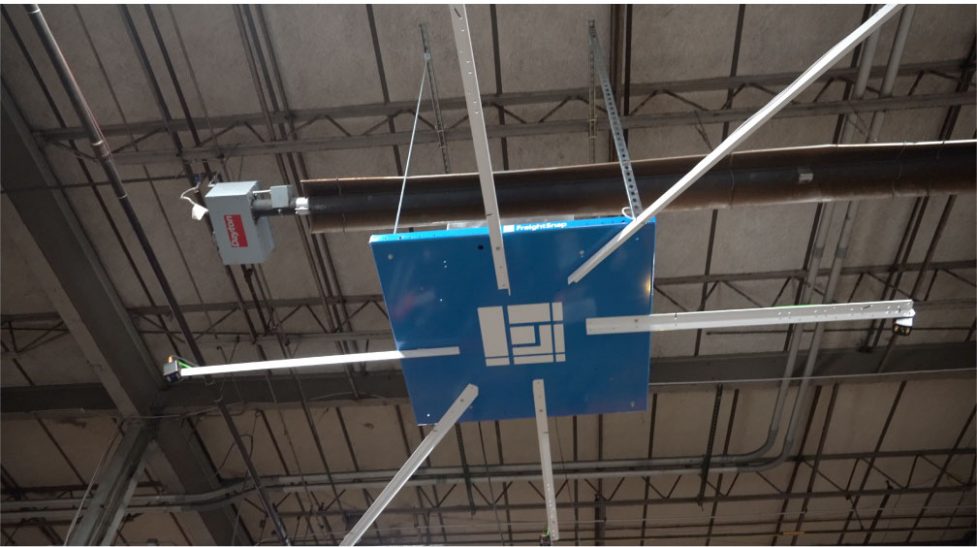Your warehouse is busy: From speeding forklifts to shrink-wrapping pallets and the nonstop flow of ticketing systems, it’s hard to know where you can save time and prevent bottlenecks.
The pandemic has created an increased reliance on e-commerce fulfillments and has made fast shipping for online orders not only necessary but very much expected in the minds of consumers. Many warehouses have started to rely heavily on the benefits of new technology to meet this need. From updated floor plans and robots to integrated warehouse management systems, warehouse operators are constantly on the lookout for cost-effective ways to increase productivity.
So, how do you adapt to increased demand and keep your warehouse up-to-speed?
Look to your layout
You already realize how much of an impact warehouse layout has on product movement and productivity. From inventory storage to loading docks, getting product out the door can be a difficult task with many variables.
To make improvements, it’s all about removing needless obstacles by creating safe and efficient walking space for your dock workers and allowing adequate movement for forklifts and other machinery. An audit of your current layout can be a powerful but simple first step. Here are four questions to ask yourself as you take stock of your workspace:
1. Is your crew able to walk directly to their desired location?
2. Are forklift drivers able to keep a consistent speed, or do they have to constantly slow down for dock workers?
3. Has the day-to-day hustle resulted in a large stack of empty boxes?
4. Is your team aimlessly stacking pallets in a corner?
Many companies struggle with a lack of space and are trying new solutions in an effort to enhance their layout. Walmart, for example, is pursuing a patent for a new system to store goods in the drop ceilings of its many superstores around the country, using robots to move stored items from above to the store shelves.
Small tweaks to layout can reap major benefits, so look for any improvement you can make and build from there.
Lower your labor costs
Labor is an unavoidable expense. The Bureau of Labor Statistics reports the number of U.S. workers in the warehousing and storage sector is only expected to increase in the near future, after growing by 55.6% from 2015 to 2020—and despite the increasing automation options available. Finding solutions that increase throughput is top of mind for any manager, especially as e-commerce purchases push the industry toward more growth.
Determining the cost of tasks in relation to labor is a good way to uncover hidden expenses. According to the BLS, the median hourly pay for a single warehouse worker is $13.80. Yet, it can take that worker more than a minute to measure the dimensions of a single pallet, for example. Dimensioners, on the other hand, allow your crew to measure the same pallet in as little as three seconds. Over the course of a year, adding just one dimensioner can save your company nearly $22,000 in labor expenses by swapping manual measurements with an automated process.
Fully automated warehouses will likely not become commonplace for several years, but many companies are already incorporating cutting-edge machinery like dimensioners to help their workers increase productivity. Some can even integrate into your existing WMS with cloud-based technology.
Technology saves time
Many of today’s carriers and manufacturers are leaning toward innovative technologies to automate repetitive tasks and keep accurate records—including an increased reliance on robotics. ABI Research estimates 4 million commercial robots will be installed in more than 50,000 warehouses by 2025, compared to just 4,000 in 2018. In fact, waiting to upgrade warehouse technology only puts companies further behind, explained in a recent report from the NAIOP:
“The most potentially transformative technologies require access to large amounts of high-quality data, but older procedures and systems often do not collect or digitize data. In some ways, a digital divide is emerging between companies that invest in systems to have the best and most consistent data and those that end up operating with practical, but more basic, operating systems.”
Pallet and parcel dimensioners are one way to streamline processes for multiple departments in your warehouse. From quickly scanned shipments to organized files, a single dimensioner can cut time and increase accuracy. Multiple businesses have seen a major ROI after investing in such technology as their workers safely ship orders at lightning speed.
Of course, that valuable data still must be maintained and organized, which can be both tedious and time-consuming. Combining integration technology with a high-quality dimensioner can drastically reduce the time and effort needed to record shipment information and then organize the data. Make sure you look for dimensioners with cloud-based technology to get the most out of your investment. Photos of your shipments can be saved to the cloud, making order records and images available in a snap.
How does your warehouse measure up?
In a period of heightened demand for e-commerce, time is worth more than ever. From productive floor plans to overhead dimensioners, a simple audit of your shipping methods and warehouse space can be a cost-saving exercise.
After all, when you’re delivering on your promises, there’s no time to waste.
For more articles like this, subscribe to our newsletter!
Was this article helpful?
Michael Eichenberg is the co-founder and CEO of FreightSnap, allowing the supply chain, logistics, manufacturing, distribution and transportation industries to measure, weigh, photograph and ID pallets and parcels in just seconds. Learn more and share your ideas on Facebook and LinkedIn.

